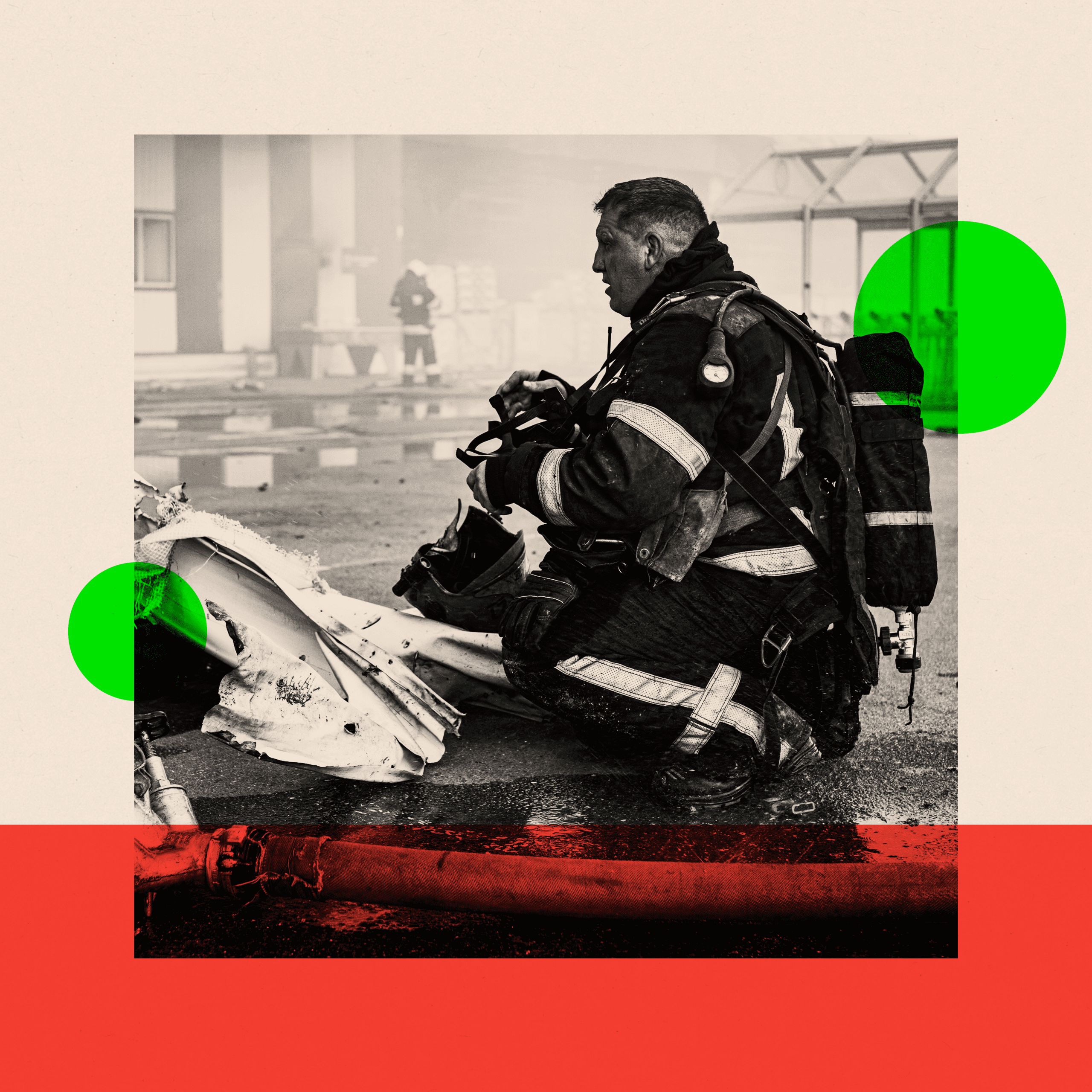
Summer is just starting in Ukraine, and it is looking dangerous.
Kharkiv, the country’s second city, in the high north-east close to Russia, is to all intents and purposes defenceless against air attacks.
Two guided bombs destroyed a DIY superstore and garden centre on Saturday afternoon when it was crowded with shoppers.
As the building burned, sending black smoke across Kharkiv, Andrii Kudenov, manager of one of the other stores in the shopping centre looked on in despair.
“The Russians want to burn everything down. But we won’t give up.”
“A lot of people were in there as it’s warm now and the gardening season has begun. In the shop there was soil, and plants.”
Andrii took out his mobile and scrolled through photos of the superstore before the attack.
“Look what beautiful flowers they had here. And not a single military man, everyone was a civilian.”
Dozens were injured and at least 15 people were confirmed killed, with more bodies left to find.
Watch: Hard choices as Ukraine faces worst crisis since war began
In every war, civilians try to preserve traces of their old lives.
As the garden centre burned, couples walked their dogs. In the magnificent squares in the centre of Kharkiv, cafes were open, ignoring air raid sirens and alerts on mobile apps.
On the steps of the opera house teenage boys practised jumps on their skateboards and girls were recording TikTok dances on their phones. Inside the opera house, in a deep concrete basement, an orchestra was rehearsing for the music festival that the war has not stopped.
Their stoic composure cannot conceal the fact that Ukraine is in its worst crisis since the first few months after Russia’s full-scale invasion more than two years ago.
The garden centre attack was one of many strikes here in the north east, as well as on the eastern front, and south near Kherson.
Ukraine’s capacity to defend itself depends on others, on decisions taken by its Western allies that are shaping events here in Kharkiv and other cities, and right along more than 1,000km (621 miles) of front line.
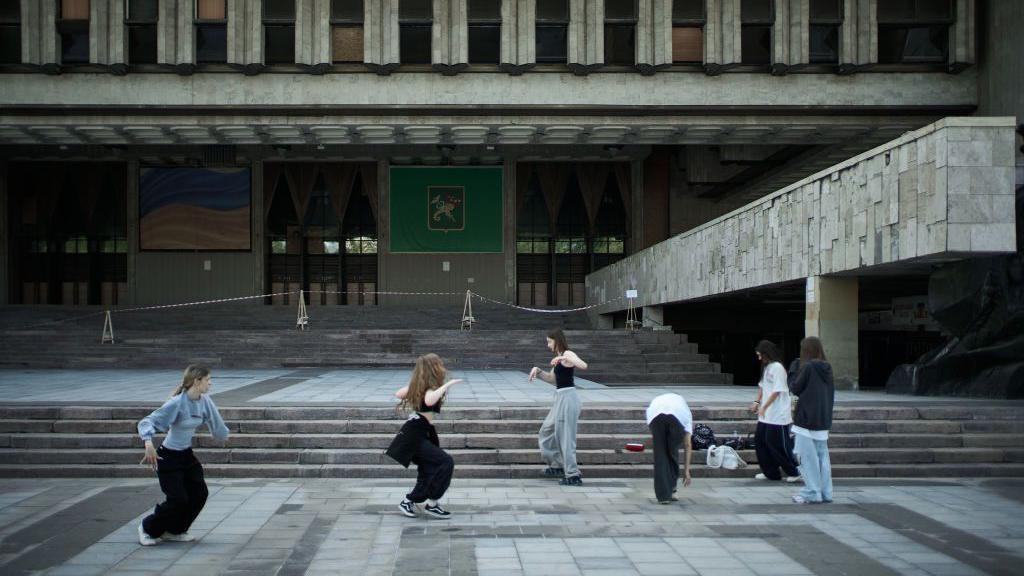
In some parts of Kharkiv, daily life continues despite the increase in Russian attacks on the city
The other strategic factor that is changing the course of the war is Russia’s ability to learn and adapt on the battlefield.
It is configuring attacks to take advantage of Ukrainian weakness, especially in air defences. Its factories are producing more weapons and ammunition than much bigger and more advanced Western economies are doing for Ukraine.
Hopes in the first year of fighting that Russia could be driven back have turned into a grim struggle to stop its forces advancing deeper into the country.
In the war’s third year, no end is in sight.
The end of the beginning?
Russian President Vladimir Putin expected a quick victory when he ordered the full-scale invasion in February 2022.
So did Nato, led by the United States. President Volodymyr Zelensky turned down their offer of evacuation.
Both the Kremlin and the Pentagon and the other Nato defence ministries expected that Russia would finish the job it started in 2014, when it occupied and annexed the Crimean Peninsula and orchestrated a victory by separatists in the eastern provinces of Donetsk and Luhansk.
Ukraine’s armed forces had improved on a dismal showing in 2014, but after a successful intervention in the war in Syria, Russia just looked too strong.
The prediction as Russian troops poured into Ukraine in February 2022 was that Ukraine’s best chance to keep fighting would be to organise an insurgency, armed by Nato.
Russia captured a deep stretch of Ukrainian territory, a "land-bridge" to link Donbas in the east with Crimea in the south.
But its attempt to seize Kyiv was a humiliating fiasco for President Putin.
By the end of March 2022, the battle for the capital was lost and the Kremlin pulled its troops back.
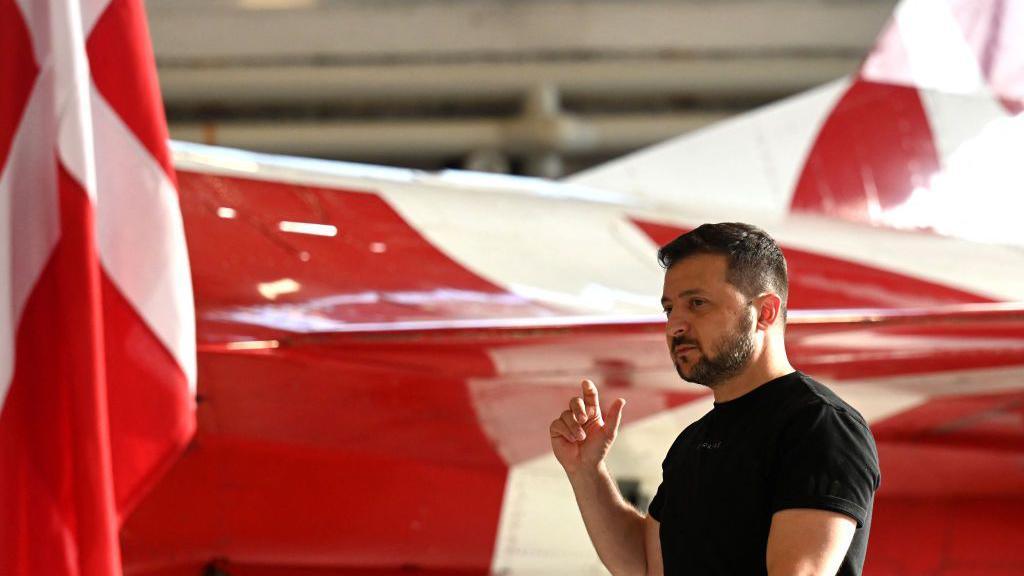
Ukrainian President Volodymyr Zelensky is eagerly awaiting the deployment of retired Nato F-16 fighter jets
Nato recognised that Ukraine could fight. It revealed itself as an unexpectedly useful ally, worthy of more support, providing a welcome set of new options in the growing face-off with Putin’s Russia.
Slowly, Ukraine was sent increasingly powerful weapons. Overcoming US President Joe Biden’s reservations remains a painful process. He feared a third world war if the US and Nato intervened with their own troops, or even if they supplied Ukraine with its most up-to-date military technology.
President Biden was persuaded to allow the supply of elderly American-built F-16 strike aircraft that were being retired by Nato air forces. They have not yet been deployed in combat, allowing Russia’s air force more space to attack.
Most Western analysts think President Putin is bluffing when he rattles the nuclear sabre.
China, Russia’s essential ally, has made it clear it does not want any use of nuclear weapons. The last thing it needs is a nuclear arms race in East Asia.
In the Western camp, Japan and South Korea, if they felt threatened enough to change their policies, both have the technological capacity to make nuclear weapons.
Joe Biden still does not want to call Vladimir Putin’s bluff.
The US continues to impose limits on the use of weapons systems it supplies, forbidding the Ukrainians to hit targets inside Russia.
President Zelensky believes that ruling ties one arm firmly behind their backs and is pushing to get it changed.
More on Ukraine war
Russian strike on Kharkiv supermarket kills 12
- Published26 May 2024
Meet the Peaky Blinders - Ukraine's drone squad defending Kharkiv
- Published26 May 2024
Russia's glide bombs devastating Ukraine's cities on the cheap
- Published19 May 2024
But by last summer, an impressive force including a collection of modern Western tanks and armoured vehicles had been assembled and Nato had trained thousands of soldiers on ranges from the Baltic to Yorkshire.
The plan was to mount an offensive that would smash through Russian lines, breaking the link between Donbas and Crimea.
It failed.
Russian defences were too strong, and without air cover an attempt to fight a Nato-style co-ordinated ‘all-arms’ war was doomed.
Ukraine’s inherent weakness is that it depends on others for funding and arms.
It faces an enemy that makes most of its own weapons and has many more people. Russia’s population of more than 140 million is around three-and-a-half times Ukraine’s.
That matters in a war where battle deaths are in the tens of thousands.
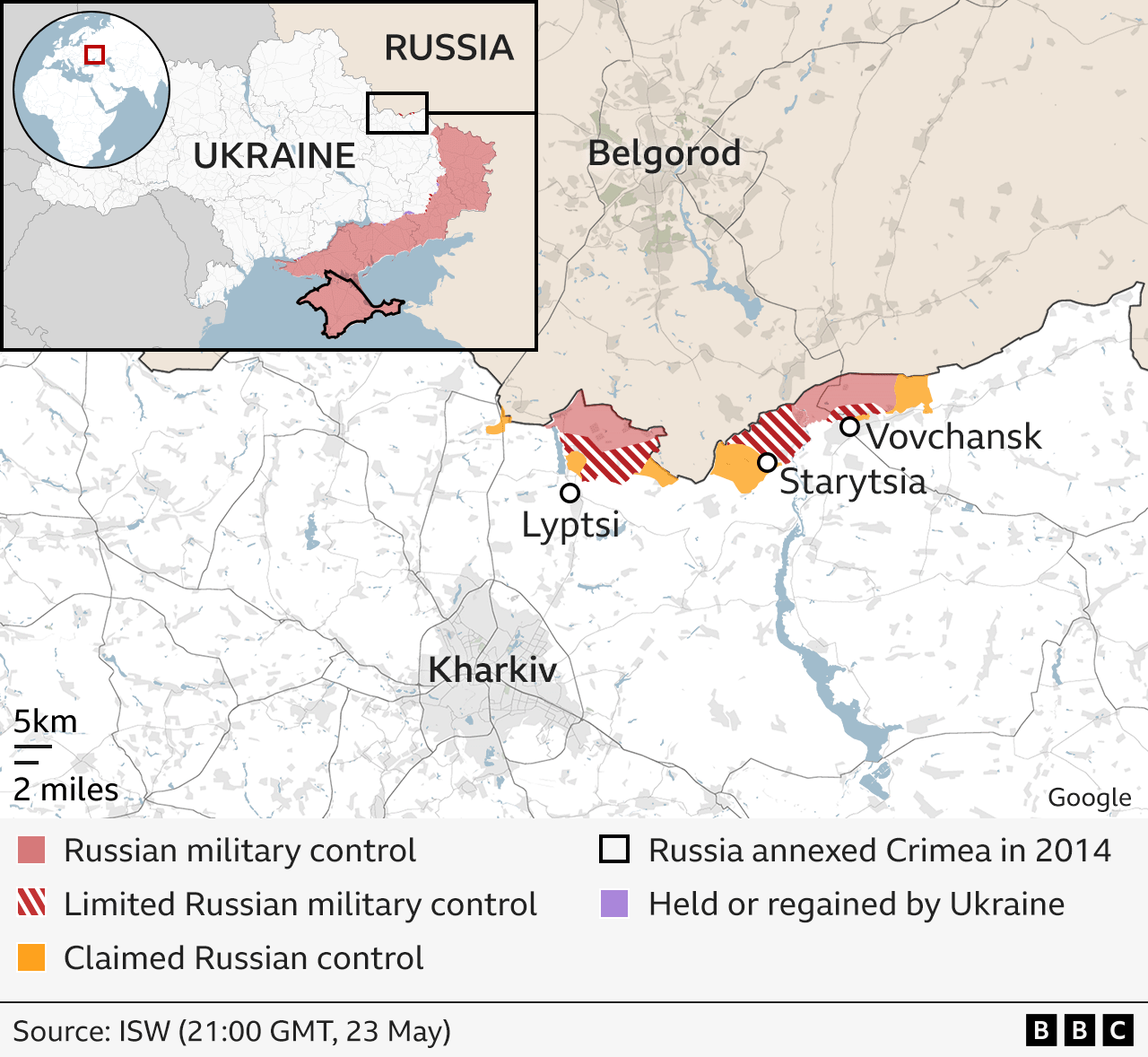
In the US, domestic politics intervened.
Joe Biden’s request for a "security supplemental" that included $60bn (£47bn) for Ukraine was held up in the US Congress for months, mostly by supporters of Donald Trump who wanted the money to deal with matters closer to home, especially illegal immigration over the southern border with Mexico.
The supplemental was only signed into law by President Biden on 24 April.
Even the US military’s considerable logistics capability will take months to restock Ukraine’s arsenals, at a time when Moscow is producing weapons and shells as fast as it can, in an economy redesigned for a long war.
“This is a war of production” according to a senior official at Nato headquarters in Belgium. “Russia is outproducing us in those things we know Ukraine needs.”
Western sanctions failed to cripple Russia’s economy. It has found new markets for its oil and gas.
Russia is buying drones from Iran and ammunition from North Korea. China, Nato believes, is not directly providing lethal aid, but it is helping Russia in other ways.
“There’s no doubt China is materially contributing to the Russian war effort,” the senior Nato official told me. “It’s rebuilding the defence industrial base, making a real difference.”
“Machine tools and microelectronics come from China and go direct to strengthening the defence industries, so they churn out more tanks and missiles.”
“One of the huge geostrategic implications of the changing relationship between China and Russia is that China will never again be the junior partner.”
The borderlands
The kindergarten was on fire when Vika Pisna drove down a dirt road into the hamlet of Yurchenkove, north-east of Kharkiv city and close enough to the Russian border to feel very dangerous.
Vika, who is a psychologist with a group called Proliska, has spent a year going into front-line villages threatened by Russia to evacuate civilians.
No children were in the kindergarten. Yurchenkove, like all the border villages, had only a few elderly or infirm civilians.
The kindergarten must have been abandoned months ago. Grass was advancing across the slides and toys in the overgrown front garden.
A man on a motorbike loaded with a bedroll and few possessions, who looked as if he was leaving too, said he didn’t know how the fire was caused, but it wasn’t a shell.
Whatever started it, no-one in the deserted, desolate village tried to put the fire out, as it licked and crackled through the kindergarten’s wooden walls and tin roof.

Luckily no children were inside this kindergarten when it was destroyed
Russia has been on the offensive in the Kharkiv oblast, or province, since its forces crossed the border on 10 May.
President Putin said the plan was to establish a buffer zone, to protect civilians in Belgorod, the Russian city on their side of the border, where he says Ukraine is killing civilians.
The offensive extends the active front line, forcing Ukraine to reinforce the Kharkiv sector, leaving holes elsewhere which Russia might try to exploit.
We followed Vika and her minibus into the border area, staying well clear of Vovchansk, the frontier town at the centre of the current fighting that is being reduced to rubble.
Even from a few miles away, it looked like a hell-hole, with angry grey clouds and columns of smoke rising high from a series of big fires, and black smoke spiralling and twisting into the sky from fresh explosions.
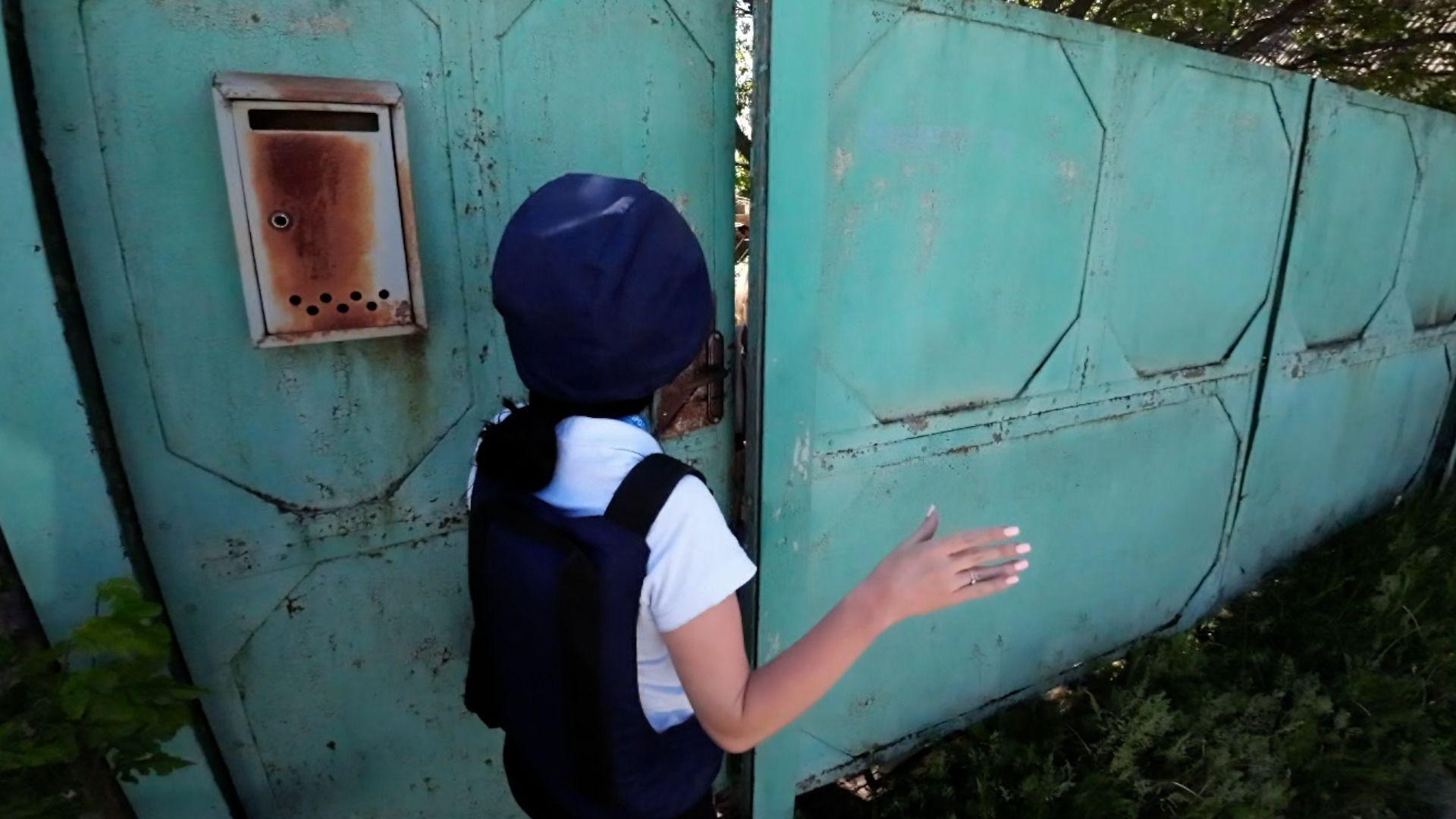
Vika Pisna travels to front-line villages to try and evacuate residents at risk of Russian fire
Liubov, the first woman on Vika’s list was ready to leave. Her dog, chained near its kennel in the front yard, barked at the strangers as Vika helped her carry out her possessions, packed into a few shopping bags.
The dog calmed down as the woman unchained it and took it into the minibus.
“I encourage them to bring their pets,” Vika said. “When you lose everything, having a pet is a comfort.”
“My soul hurts. I’ve lived in this house for more than 40 years,” Liubov said, squashed into the bus with her dog and her luggage.
Was she leaving because of the shelling?
“Of course! It was so close, less than 100 metres. All my windows blew out.”
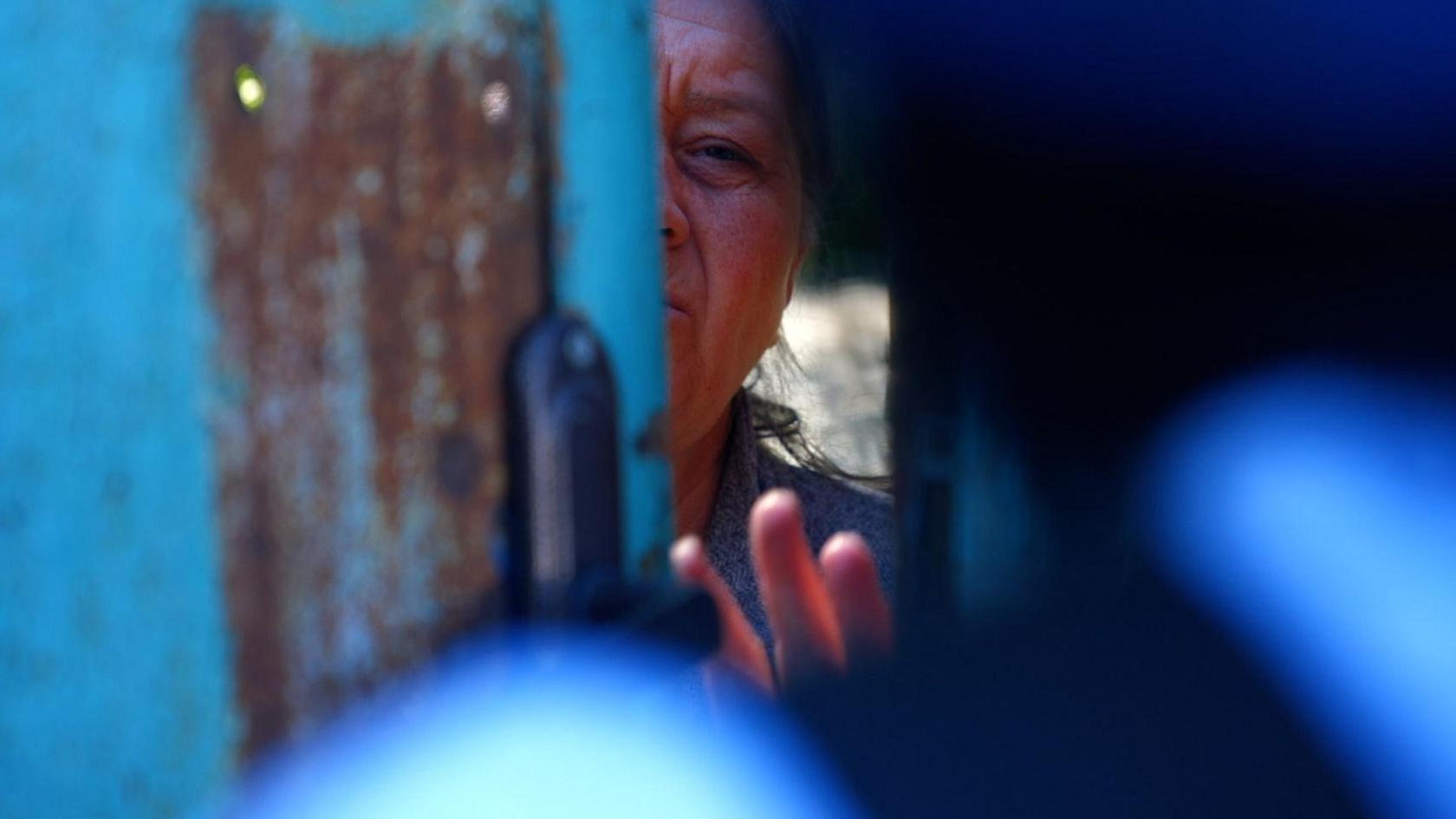
Vika was unable to convince Emma and her husband to leave the border area
Vika could not persuade the next people she called on to evacuate. She banged on a solid metal gate. An old woman opened it a crack.
“Good afternoon, are you Emma?” Vika asked. When Emma and her husband, somewhere inside out of sight, refused to go, Vika tried to change their minds.
“Yesterday there was shelling near you. It’s very dangerous. You are putting yourself in danger. We have volunteers, who will help you move in, they will help you apply for benefits, medications and everything else. It will all be free. And you’ll have psychological assistance.”
“Thank you! Thank you for everything, but I won't go.”
“Look, we’re evacuating people because it’s a critical moment. If you want, you can return. But now, it is very dangerous here, with shelling every hour or two. It’s better to leave. There will be more shelling, and more hits. It’s dangerous here.”
“I know.”
“It's free! You’ll get free housing.’
“I won’t go.”
Emma closed the gate.
The printing press
A body bag was being carried out of the remains of a burning print factory less than an hour after Russia hit it with a series of missiles on the afternoon of the 23 May. Seven people were killed in the attack.
Ukraine is having to make hard choices about how it deploys and uses its limited air defences. The missiles that hit the printing plant were not intercepted. Nor was a Russian drone that was operating above the factory before, after and during the attack.
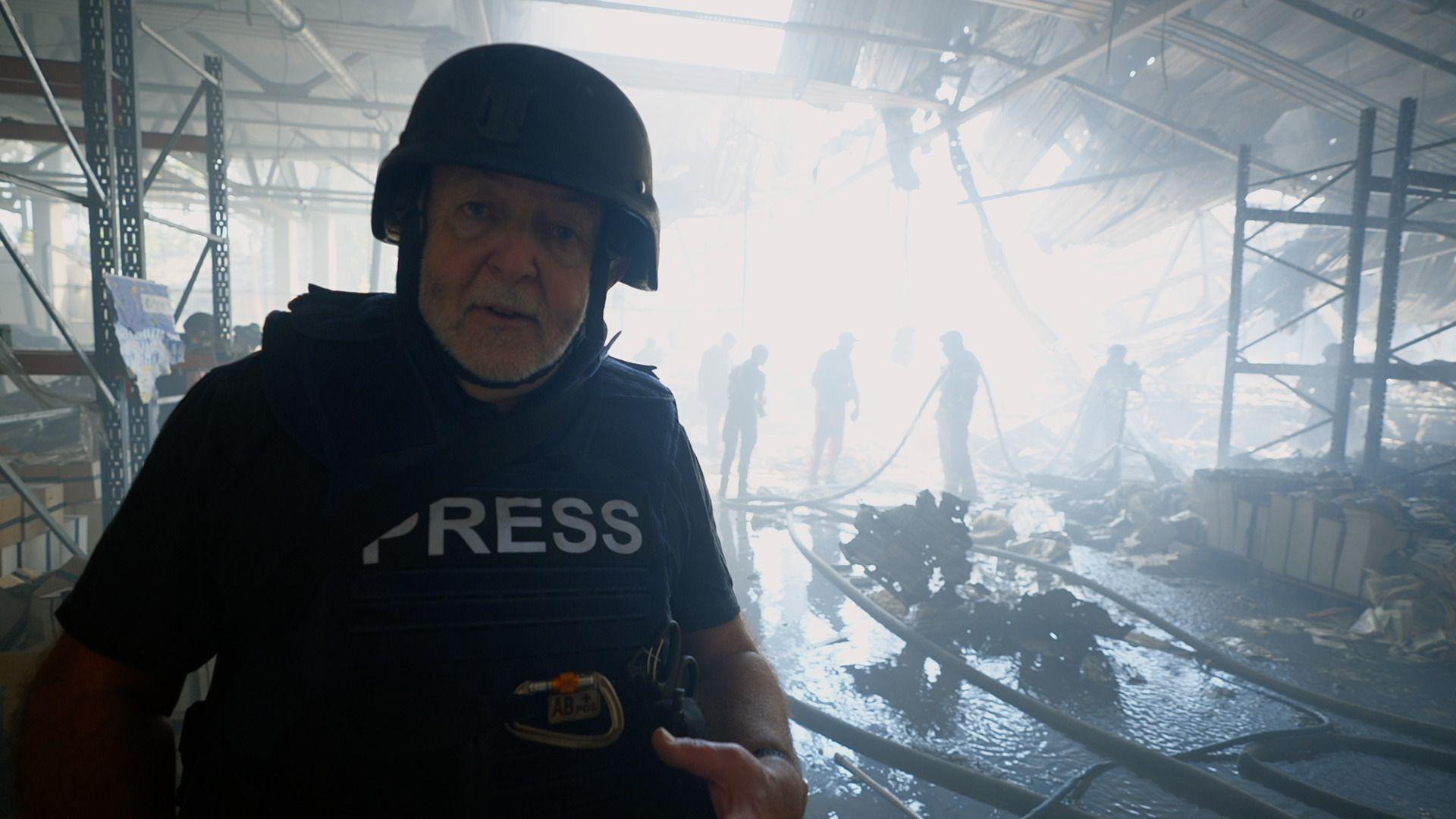
Ukrainian air defences were unable to stop the Russians from targeting a local printing press in Kharkiv
In the yard, as firefighters went into the building to damp down the blaze and search for more bodies, Volodymyr Tymoshko, head of the Kharkiv oblast police, could barely contain his anger.
“All missiles hit their target. They weren't shot down. Why? Because the arrival time of missiles from the Belgorod region is approximately 40 seconds. Those missiles can only be shot down by the Patriot air defence system, which we don’t have here.”
He called Russia ‘the sub-empire of vandals and orcs... the resident evil.”
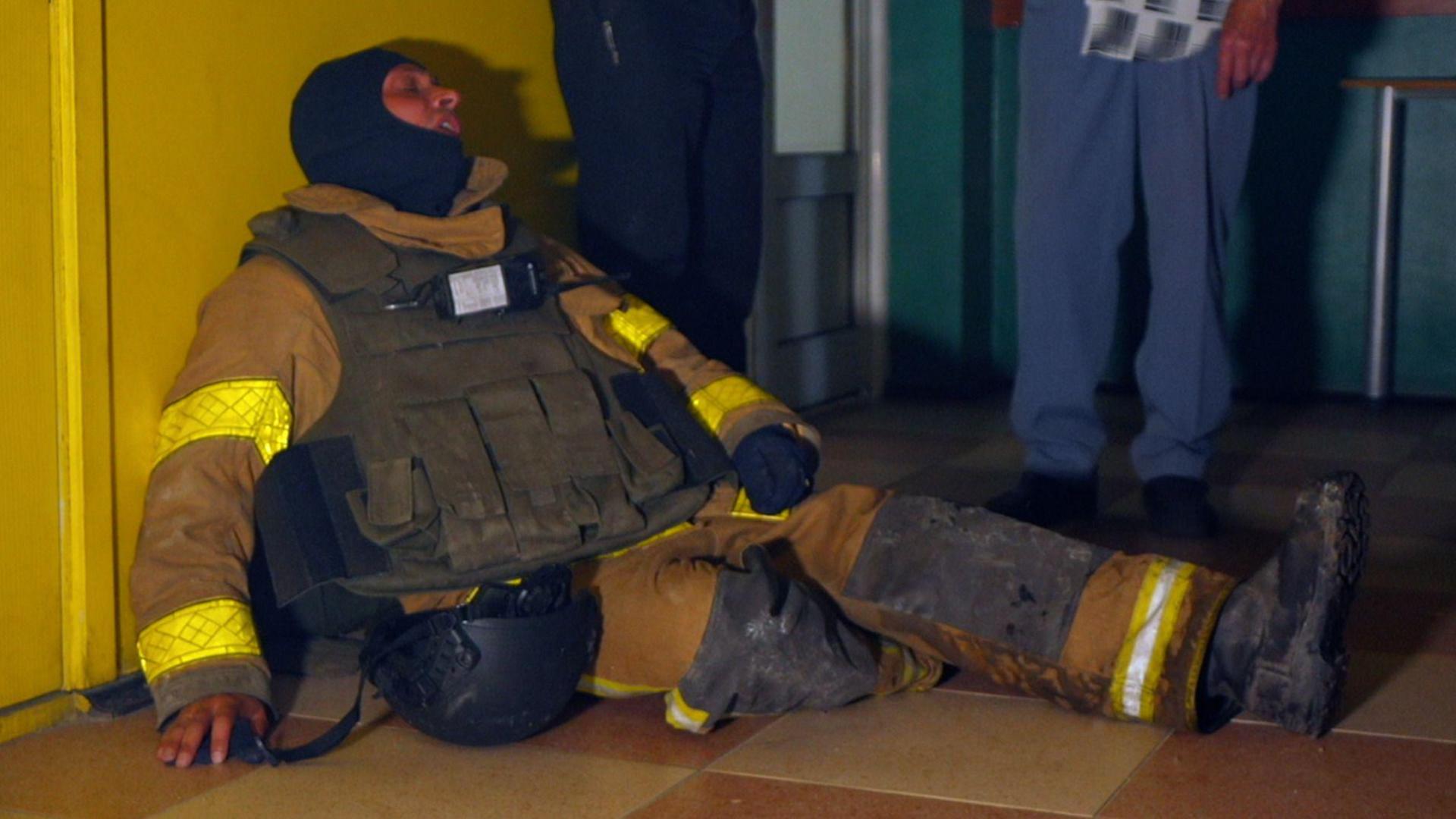
Firefighters had to comb the building to search for bodies
Days later Olena Lupak, one of the workers at the printing plant, was still being treated in hospital for her wounds. Much of her visible skin was showing visible wounds from shrapnel and blast and her hair was singed where it had caught fire.
Olena believes her life was saved by pallets of printed paper that took the worst of the explosion. She was emotional, sobbing then trying to smile, traumatised by everything that has happened to her.
“I wasn’t afraid of anything at all, but now I’m even afraid to be in Kharkiv. I still hoped that Russia was not a terrorist state and that they attacked only military targets, but they hit the civilians.”
“I thank the United States for helping us. I’m grateful to Germany and all the countries of the world for what they’ve done. But we are helpless, and we have nothing. We’re suffering so much… we can’t defend ourselves.”
The long war
Ukraine is not as badly off as Olena Lupak fears, though it is understandable to feel that way in Kharkiv this month. Wounded men from the garden centre, lying in hospital beds with shattered limbs, were just as fearful.
“Honestly, I don’t know what will happen,” said Vitalii, whose legs were crushed by the ceiling as it collapsed. “I’d like it to end soon but I don’t know how.”
In the bed opposite Oleksandr said Ukraine could not do a deal with Russia. He had fallen badly as he escaped the fire from a second-floor window.
“I think we must beat them. They came here with bad intentions.”
The queues signing up for the army and territorial defence at the start of the war are long gone. Many in that first wave of volunteers are dead or too broken by their wounds to fight.
Ukraine is trying harder to recruit, and conscript, younger men. Most of their front-line fighters are middle aged and exhausted. Ukraine’s generals do not squander lives in the way that Russia does. But they still suffer considerable numbers of dead and wounded, on a scale that at which President Zelensky has only hinted.
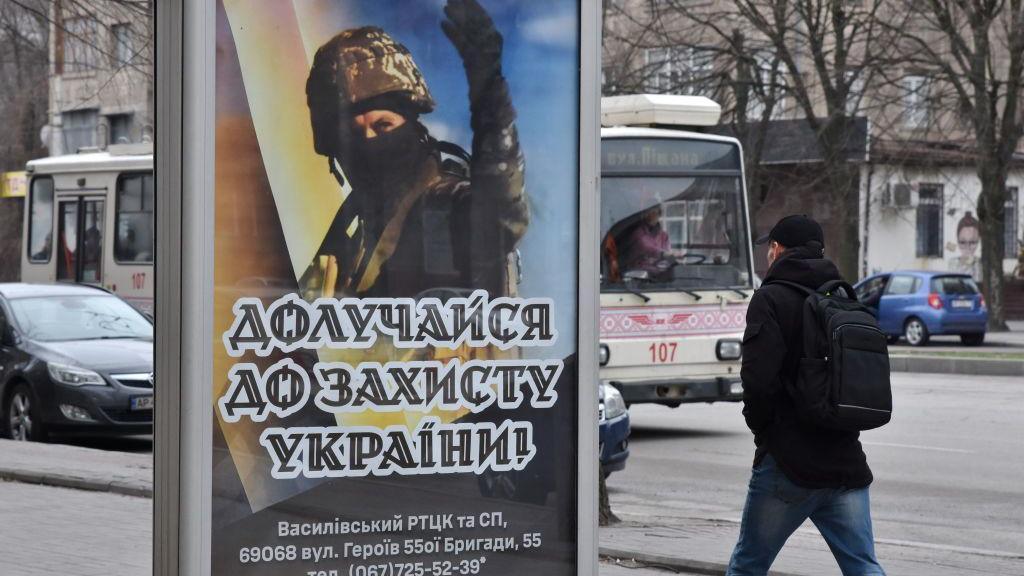
Ukraine is trying hard to recruit more young men, with many of its forces made up of soldiers in their 40s
European allies of Ukraine are trying, with varying degrees of success, to offer more support. The new American package of military aid will make a difference once it arrives. It means Ukraine can keep fighting. It will not win the war, and it will be the last before the US presidential election in November. If Donald Trump wins, no-one knows if he will push as hard as Joe Biden to help Ukraine.
Ukraine is also helping itself, pioneering new forms of drone warfare. Maritime drones, uncrewed boats packed with explosives, have sunk Russian warships and reopened export routes through the Black Sea.
Momentum in long wars shifts back and forth. Now Russia is pushing hard, as it senses it has a window of opportunity before Ukraine gets its new weapons.
One big question this dangerous summer is whether Russia’s size, weight and tenacity can inflict a battlefield defeat on Ukraine that will change the strategic equation in this war.
Ukraine and its allies believe that Russia does not have the combat power to do more than take limited territory at a high cost in men and materiel.
But think back a year, to the time when hopes were high – too high – for Ukraine’s summer offensive. Russia is stronger now, and without a qualitative change in Ukraine’s favour, Moscow will do all it can to grind its way deeper into this war.
